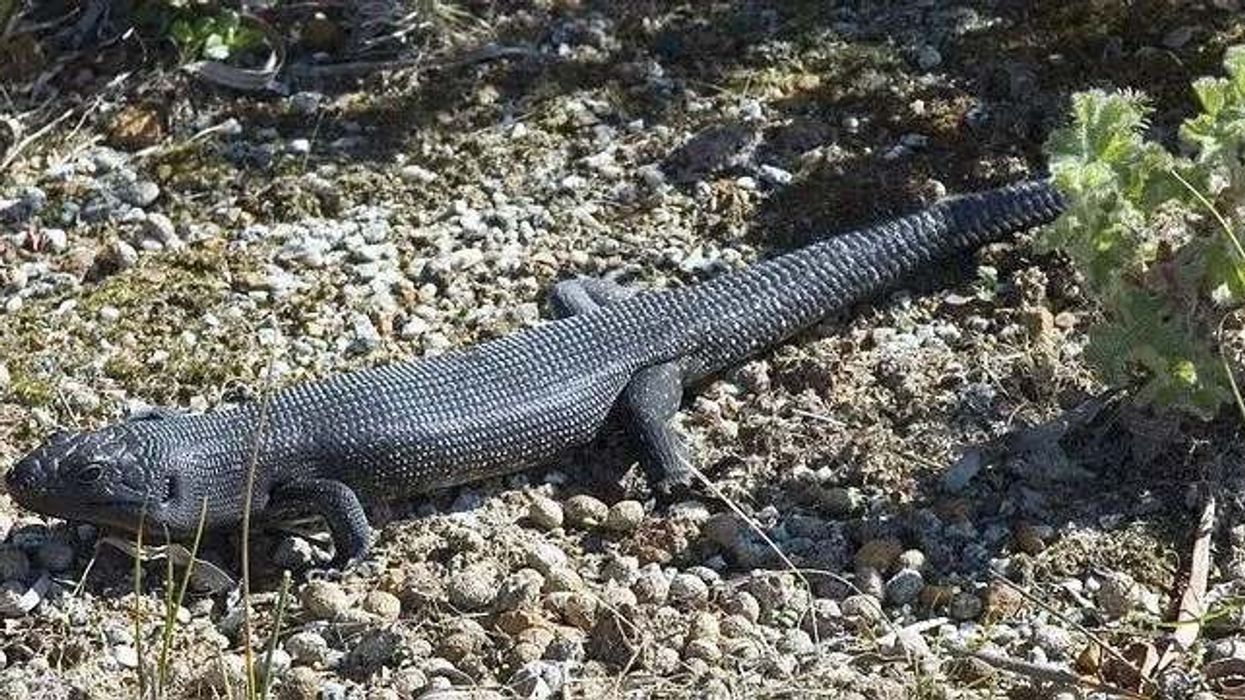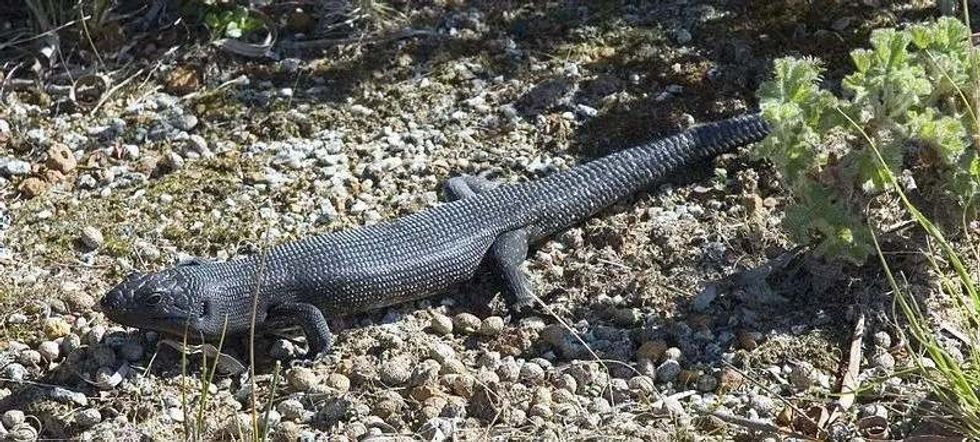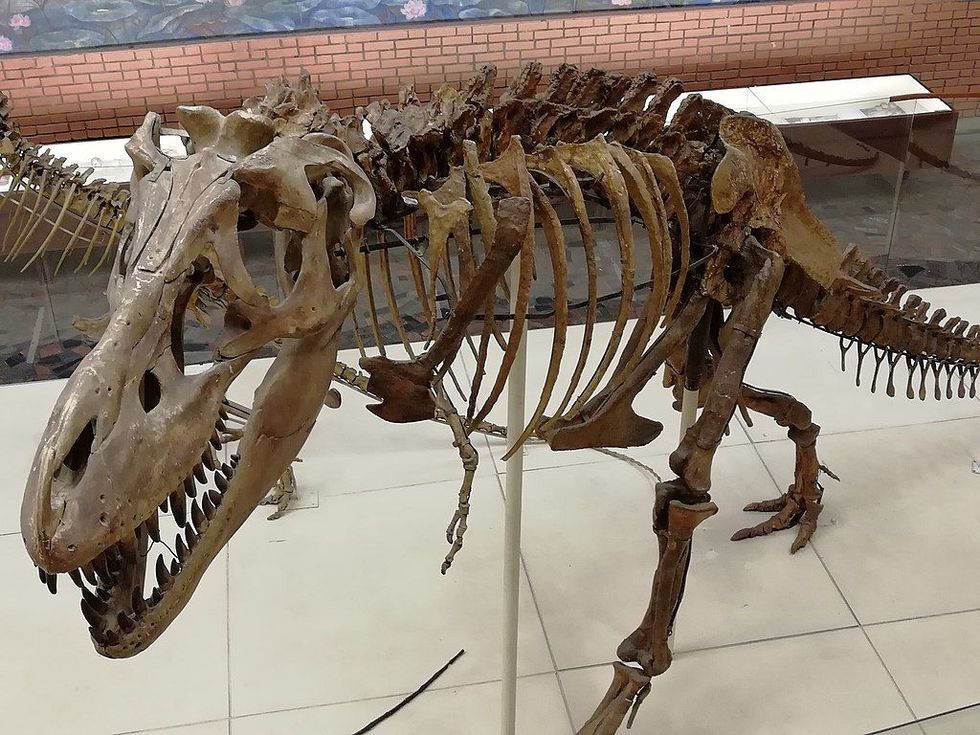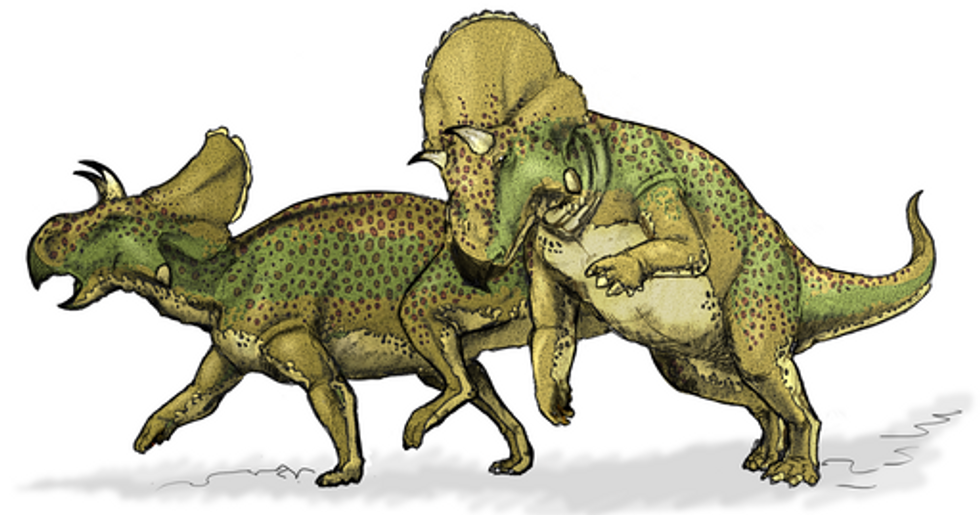The most widespread group of lizards is the fascinating skink family called the Scincidae family. This family has more than 1500 surviving species of skinks.
Scincidae family members have smooth scales on their skin. They have short limbs and long tails.
Giant skinks have a large size in comparison to other lizards. The prehensile-tailed skink and Solomon Islands skinks are the largest lizards of all the skink species. These reptiles are mostly herbivores, but some are carnivores as well with their diet comprising beetles, flies, millipedes, centipedes, slugs, leaves, flowers, shoots, and rodents.
They have a large body with the color varying between shades of yellow, gray, brown, black, and green. They're found across the world in the Cape Verde islands of the Atlantic Ocean, the Solomon Islands of the Pacific Ocean, eastern Australia, southern USA, Madagascar, and Papua New Guinea.
Found these facts fun and interesting? Keep reading to discover much more information about giant skinks!
If you liked reading giant skink facts, then check out our fun facts about the common garden skink and the kagu.
Giant Skink Interesting Facts
What type of animal is a giant skink?
The giant skink is a large lizard. Giant skinks do not belong to one genus, they belong to a variety of genera including Tiliqua, Corucia, Chioninia, Plestiodon, and Leiolopisma.
What class of animal does a giant skink belong to?
Giant skinks belong to the class Reptilia and are one of the largest lizards. They belong to the family Scincidae.
How many giant skinks are there in the world?
The exact population of these reptiles is not known. However, we do know that the Cape Verde giant skink and Mauritian giant skinks are sadly extinct. The closest related species to the Cape Verde skink is the Round Island skink species that can be spotted in Round Island, Mauritius.
Where does a giant skink live?
Giant skinks can be found in a variety of habitats and a variety of locations. Giant skinks are mostly arboreal.
They can be found in the Cape Verde islands of the Atlantic Ocean, the Solomon Islands of the Pacific Ocean, eastern Australia, southern USA, and Papua New Guinea. The giant water skink lives in Madagascar and Kishinoue's giant skink (Plestiodon kishinouyei) is found in locations in Japan only.
What is a giant skink's habitat?
These skinks are tree-dwelling creatures that can be sometimes found moving on the ground too. They can be found in forested areas near water bodies like marshes and slow-moving rivers. As they're cold-blooded, it's common for adults to climb up high on tree branches to bask in the sun. Female and male specimens both exhibit highly territorial behavior.
Who do giant skinks live with?
Giant skinks are usually solitary as they have a shy nature. They can also live near species of their own in a cluster as they can be quite gregarious too. The adults live with their mates during mating season.
How long does a giant skink live?
Giant skinks can have an average lifespan varying between 25-35 years!
How do they reproduce?
The reproduction of species of giant skinks varies. Solomon Island skinks (also called the prehensile-tailed skink) give birth to only one or two offspring.
The young have a large body, being a third of the size of the mother. Both male and female skinks of this species care for the newborn young.
However, the giant broadhead skink can lay eight to 22 eggs that are protected by the male and female until they hatch. The young stay with their parents for a while or are sometimes abandoned by their parents.
What is their conservation status?
The Cape Verde giant skink (also called the Santa Cruz pupfish) and the Mauritian giant skink species have an Extinct conservation status as per the IUCN. The Cape Verde giant skink went extinct due to being hunted for skink oil as well as for food.
The broad-headed skink has a Least Concern conservation status whereas the Kishinoue giant skink and the Round Island skink species have a ‘Vulnerable’ conservation status.
Giant Skink Fun Facts
What do giant skinks look like?
Giant skinks have very long bodies including their tails. They have pointed sharp teeth and a strong pair of jaws. They have scales all over their cylindrical body.
These scales can be of different colors including yellow, green, black, gray, and brown. These arboreal creatures have very long tails and short legs. They can have a length range of 6-32 in (15-80 cm) and a weight range of 10-35 oz (283-1000 g).

*Please note that this is an image of a skink, not a giant skink specifically. If you have an image of a giant skink, please let us know at hello@kidadl.com.
How cute are they?
These creatures can be cute to some people because of their earthy shades of skin and their fascinating behavior.
How do they communicate?
These reptiles aren't known to communicate with one another, except during the breeding season when they employ pheromones.
How big is a giant skink?
Giant skinks can get quite large when compared to the other lizards of their class. They can grow up to 32 in (81 cm) with a length range of 6-32 in (15-80 cm) from snout to tail.
Specimens of the extinct species, Mauritian giant skink, had a length of 32.1 in (81 cm) which is about five times the size of a common lizard.
How fast can a giant skink run?
The speed of all giant skinks is not evaluated yet but giant skinks are arboreal and climb trees quickly. The blue-tongued skink has a top speed of 65 mph (104 kph).
How much does a giant skink weigh?
Giant skinks have a weight ranging between 10-35 oz (283-1000 g).
What are the male and female names of the species?
There are no particular names for female and male giant skinks.
What would you call a baby giant skink?
Babies of these skinks can be called young or newborns.
What do they eat?
These long animals feed upon beetles, grasshoppers, crickets, flies, millipedes, centipedes, slugs, isopods, moths, leaves, flowers, shoots, small lizards, and rodents. They are preyed upon by birds, foxes, snakes, and raccoons. Like all lizards, they can shed their tail and run away from predators. They can also climb high up a tree to escape predators.
Are they poisonous?
No, these animals are non-poisonous. They are sometimes falsely believed to be, but they aren't. They pose no threats to humans and cannot kill humans.
Would they make a good pet?
Some of these large skinks can be kept as pets and would make great pets as they have a docile nature. An owner must make the right adjustments to their environment and must always meet the diet requirements of these reptiles.
Did you know...
Kishinnoue's giant skink (named after a Japanese biologist) exhibits island gigantism and is the biggest member of its extensively distributed genus.
Different types of giant skink
There are different types of giant skinks like the Solomon Islands skink, the monkey-tailed skink, the Cape Verde giant skink, the Mauritian giant skink, and the giant blue-tongue skink. These can be distinguished from each other by their skin color, their tails, and their skull shape. The most common skinks are blue-tongued skinks and broad-headed skinks.
How deadly are giant skinks?
Giant skinks are not deadly and do not cause any kind of harm, like all other skink species. They can bite humans if they feel that they are in danger though.
Here at Kidadl, we have carefully created lots of interesting family-friendly animal facts for everyone to discover! For more relatable content, check out these boa facts and lava lizard facts for kids.
You can even occupy yourself at home by coloring in one of our free printable giant skink coloring pages.










